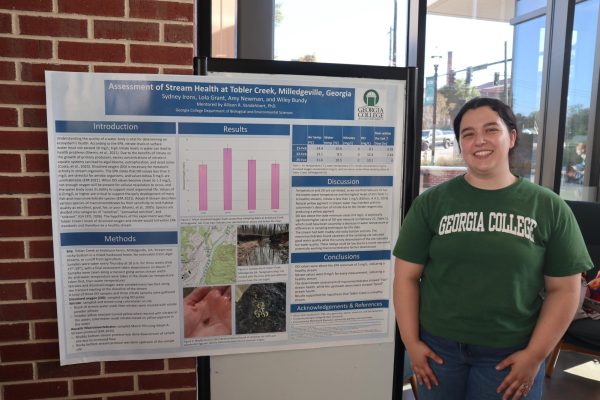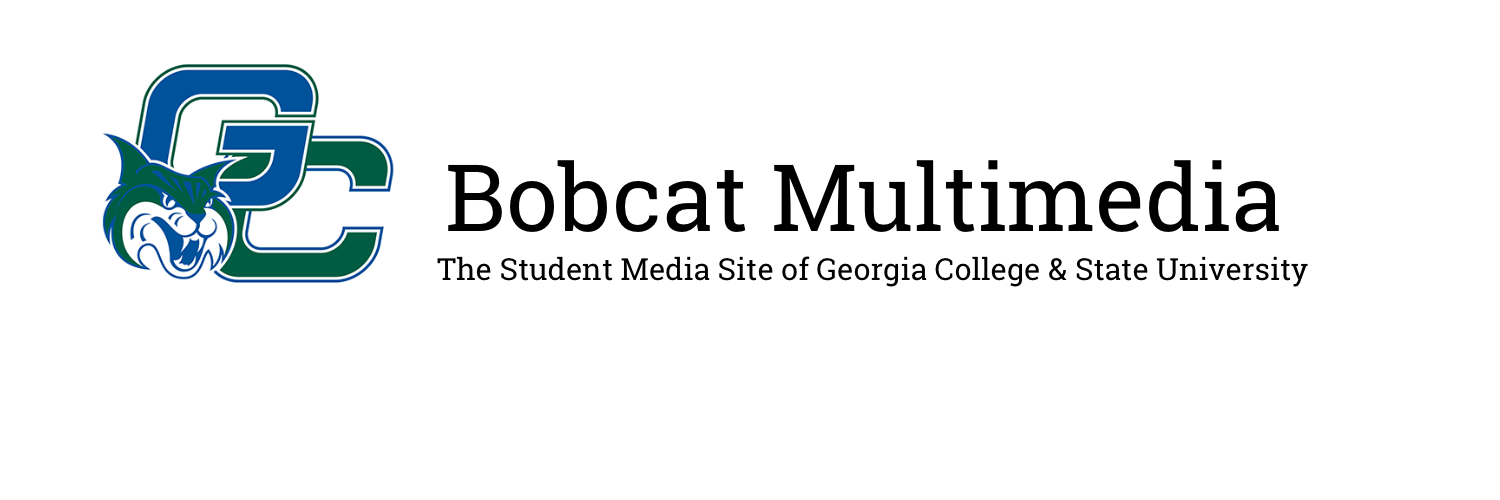
The Aquatic Sciences Center, Aquatic Sciences Club and Academic Outreach came together to produce the fourth ever Aquatic Science Symposium which demonstrated research and scientific findings.
Upon entering the Integrated Sciences Complex (ISC) building, students and faculty flashed great smiles as they stood by posters full of integral research and data.
Wiley Bundy, a master’s student in Biology and vice president of the Aquatic Science Club, was one of the students in the building who created a poster board full of work; her study was conducted at Tobler Creek in Milledgeville, Georgia and focused on measuring dissolved oxygen and nitrate levels in the stream.
“Even though there were really low levels of nitrates, sometimes our instruments are not fine enough,” Bundy said. “They can’t pick up those low levels, but because of the macroinvertebrates we found and other animals, we can indicate that the stream was of good quality. We also saw that the different rain events were affecting the dissolved oxygenlevels.”
For Bundy, the symposium is more than an event, it is an opportunity to practice public speaking and presenting research. She expressed how this project from her class on the water quality of Tobler Creek led her to this presentation at the symposium as she wanted to share her findings.
After a bit more mingling, professor and aquatic sciences center director Samuel Mutiti led everyone into a separate room where four presenters spoke.
Each speaker presented vastly different topics, with some including topics such as “Fin Whales in a Petri Dish” and “Decoding Orca Communication to Understand Boat Interactions in the Iberian Sea.”
Lab technician Anya Mukundan presented Fin whales in a petri dish. She studied these whales at the University of Bergen in Norway and looked at cell cultures upon receiving biopsy collections. Her presentation detailed her findings during this study and her thoughts on the relation between a whale’s consumption of plastic and its genetic cell structure.
Chloe Caroll presented about orca communication and demonstrated her understanding of what we know and are still learning about this phenomenon. She refuted certain ideas based on professional research of orcas, such as the idea of them being aggressive toward boats, while also opening questions of interpretation for why their behavior might seem negative.
Upon finishing the presentations, attendees were escorted from the room and returned to the ISC atrium. Here, food was provided by the three organizations and they continued to ask students about their posters.
The symposium is not only for the club, but for everyone. The public is given this knowledge for a continual pursuit of education on everything revolving in aquatic science.
“The Aquatic Science Center has multiple goals but mainly to just bring awareness and education about water not just to Georgia College, but to the community at large,” Mutiti said. “The symposium is just one way of celebrating water and hopefully it will grow because we want to try and bring everyone interested in aquatic science and water together.”
The Aquatic Sciences Center, Aquatic Sciences Club and Academic Outreach want to continue hosting the symposium once each semester for those interested in aquatic science to learn more about student findings.
The symposium has room for everyone considering the scientific research and discovery ranges over vastly different topics. From microscopic to macroscopic, cellular studies on whales to orca behaviors, anyone can find interest in the wide array of studies demonstrated at the event.

